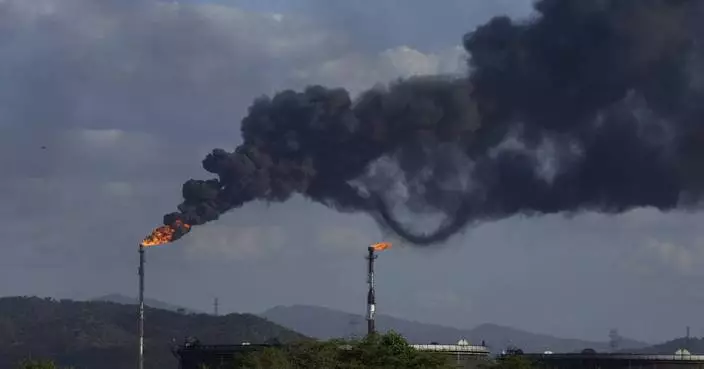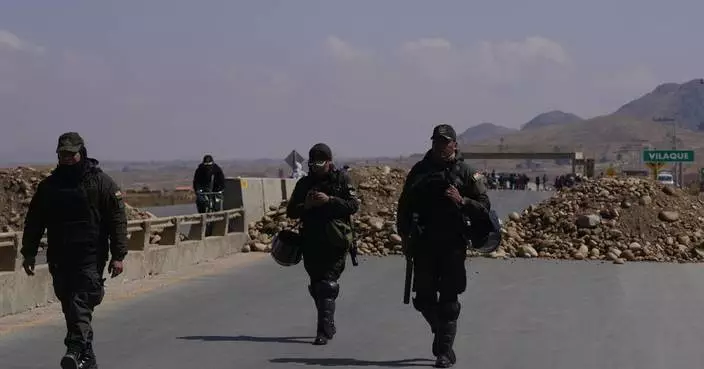Can there be a "Roseanne" without Roseanne? The answer is yes, indeed. There can even be a pretty good sitcom. And you might not miss her that much.
ABC on Tuesday night aired the first episode of "The Conners," a spinoff of "Roseanne" without Roseanne Barr. An overdose of pain pills may be the explanation for the contentious comedian's absence from the Conner dining table, but she still haunts it, at least in the new show's pilot.
The writers — Bruce Helford, Bruce Rasmussen and Dave Caplan — have done an absolutely masterful job of tackling a post-Barr world, confronting sadness, cynicism and hopefulness in just the right amount of proportions.
They've accomplished that without the main reason people once tuned in. Barr was the show's gravitational pull, the hurler of barbs in that accusatory, whiny voice. Leaving her behind is akin to taking Neil Patrick Harris out of "How I Met Your Mother" or airing "Star Trek" without William Shatner.
But in the absence of Barr's acerbic black hole, the trio of Dan Goodman, Laurie Metcalf and Sara Gilbert raises its acting games, turning the first episode into something like a one-act play, albeit a comedy written by Arthur Miller.
The pilot begins three weeks after Roseanne's funeral, with the family still coming to grips with its loss in its own trademark way with off-color barbs. "I'm tired of crying. And laughing inappropriately is what mom taught us to do," Lecy Goranson's Becky says. When husband Dan is offered a free sympathy beer at a bar, he successfully upgrades it from domestic to German.
Goodman has never been better, showing his tender and angry sides underneath all that bluster and gruff, while an aching Gilbert tears up at one point, freed from her usual rat-a-tat joke demands. And you can feel Metcalf's yawning grief at the loss of her sister in a visceral way as she goes on a manic cleaning binge. "I don't want to go home. I don't want to leave this house because I don't want to leave her," she wails.
We learn that Roseanne had multiple pain-pill suppliers and was stashing stockpiles all over the house. "Who am I supposed to be mad at now?" Dan asks. For his part, Dan also starts to deal with his uncomfortableness with homosexuality, in the end sitting down with his gender non-conforming grandson to help him pick a potential boyfriend.
One thing noticeably absent from the first episode: politics. There's no Trump, no Hillary, no Washington. The fission of red state-versus-blue state infighting that made the reboot of "Roseanne" such a flashpoint is gone. Viewers are left with a blue-collar family worried about bill collectors and military deployments.
Barr's absence makes sense since her addiction to opioids was a prominent story line in last season's reboot. ABC fired Barr from "Roseanne" after she posted a racist tweet (she apologized). Barr said she agreed to the spinoff to save the jobs of 200 cast and crew members who were idled when "Roseanne" was canceled.
"Roseanne" was always masterful at quickly popping its own moments of emotional sweetness with a wry, sardonic needle, basically and gleefully mocking the traditional sitcom formula. Thankfully, "The Conners" stays in that tradition.
When Jackie, who in one scene is putting away kitchen tools, tearfully hugs Darlene in the kitchen, the younger woman admits: "It hurts." Jackie responds: "I know, hon. It's going to hurt for quite a while."
"No," replies Darlene, "Corn holders in my shoulder."
The first episode artfully mixes boob jokes and poignant scenes, as when Dan silently hugs the empty space in the bed where his wife once lay. The swirling credits and harmonica theme song that plays when family members gather around the kitchen table now comes at the end, and without Barr's throaty laugh.
The cast seems to reference the elephant in the room when Dan and Darlene toast Roseanne's stubbornness. "She was gonna to do what she was gonna do," Goodman says. "She never listened to a damn person in her life."
With her polarizing presence gone, we can finally listen to the rest of the family. And maybe we might, one day, ask, "Roseanne, who?"
Mark Kennedy is at http://twitter.com/KennedyTwits
WASHINGTON (AP) — The U.S. has kept an increased military presence in the Middle East throughout much of the past year, with about 40,000 forces, at least a dozen warships and four Air Force fighter jet squadrons spread across the region both to protect allies and to serve as a deterrent against attacks, several U.S. officials said.
As attacks between Israel and Hezbollah sharply spiked this week, worries are growing that the conflict could escalate into an all-out war, even as Tel Aviv keeps up its nearly yearlong fight against Hamas militants in Gaza.
Hezbollah says Israel crossed a “red line” with explosive attacks on its communications devices and vowed to keep up the missile strikes it’s launched since fellow Iranian-backed militant group Hamas attacked Israel on Oct. 7, setting off the war in Gaza.
Israeli Defense Minister Yoav Gallant — who has spoken repeatedly this week to U.S. Defense Secretary Lloyd Austin — has declared the start of a “new phase” of the war, shifting its focus to the northern front against Hezbollah in Lebanon.
So far, the U.S. hasn't signaled a troop increase or change as a result of the latest attacks, and there is already a beefed-up force in the region.
“We’re confident in the ability that we have there right now to protect our forces and should we need to come to the defense of Israel as well," Pentagon spokeswoman Sabrina Singh said Thursday.
A military official said the additional resources have helped as the U.S. patrols various conflict areas, including operations targeting the Islamic State group in Iraq and Syria, defending Israel and countering threats from Iranian-backed Houthi rebels in Yemen, who have targeted commercial ships in the Red Sea and launched ballistic missiles at Israel.
The officials spoke on condition of anonymity to describe U.S. troop movements and locations.
Here’s a look at the U.S. military presence in the Middle East:
Normally, about 34,000 U.S. forces are deployed to U.S. Central Command, which covers the entire Middle East. That troop level grew in the early months of the Israel-Hamas war to about 40,000 as additional ships and aircraft were sent in.
Several weeks ago, the total spiked to nearly 50,000 when Austin ordered two aircraft carriers and their accompanying warships to stay in the region as tensions roiled between Israel and Lebanon. One carrier strike group has since left and moved into the Asia-Pacific.
The beefed-up presence is designed both to help defend Israel and protect U.S. and allied personnel and assets.
Navy warships are scattered across the region, from the eastern Mediterranean Sea to the Gulf of Oman, and both Air Force and Navy fighter jets are strategically based at several locations to be better prepared to respond to any attacks.
The U.S. is back to one aircraft carrier in the region. Austin has extended the deployment of carriers several times in the past year so that on a few occasions, there has been the rare presence of two at once.
American military commanders have long argued that the presence of a formidable aircraft carrier — with its array of fighter jets and surveillance aircraft and sophisticated missiles — is a strong deterrent against Iran.
The USS Abraham Lincoln and its three destroyers are in the Gulf of Oman, while two U.S. Navy destroyers are in the Red Sea. The USS Georgia guided missile submarine, which Austin ordered to the region last month, had been in the Red Sea and remains in U.S. Central Command, but officials declined to say where.
There are six U.S. warships in the eastern Mediterranean Sea, including the USS Wasp amphibious assault ship with the 26th Marine Expeditionary Unit aboard. And three Navy destroyers are in that area.
About a half dozen of the F/A-18 fighter jets from the USS Abraham Lincoln have been moved to a land base in the region. Officials declined to say where.
The Air Force sent in an additional squadron of advanced F-22 fighter jets last month, bringing the total number of land-based fighter squadrons in the Middle East to four.
That force also includes a squadron of A-10 Thunderbolt II ground attack aircraft, F-15E Strike Eagles and F-16 fighter jets. The Air Force is not identifying what countries the planes are operating from.
The addition of the F-22 fighter jets gives U.S. forces a hard-to-detect aircraft that has a sophisticated suite of sensors to suppress enemy air defenses and carry out electronic attacks. The F-22 also can act as a “quarterback,” organizing other warplanes in an operation.
But the U.S. also showed in February that it doesn’t have to have planes based in the Middle East to attack targets. In February, a pair of B-1 bombers took off from Dyess Air Force Base in Texas and flew more than 30 hours in a roundtrip mission in which they struck 85 Islamic Revolutionary Guards Corps Quds Force targets in Iraq and Syria in response to an attack by IRGC-backed militias that killed three U.S. service members.
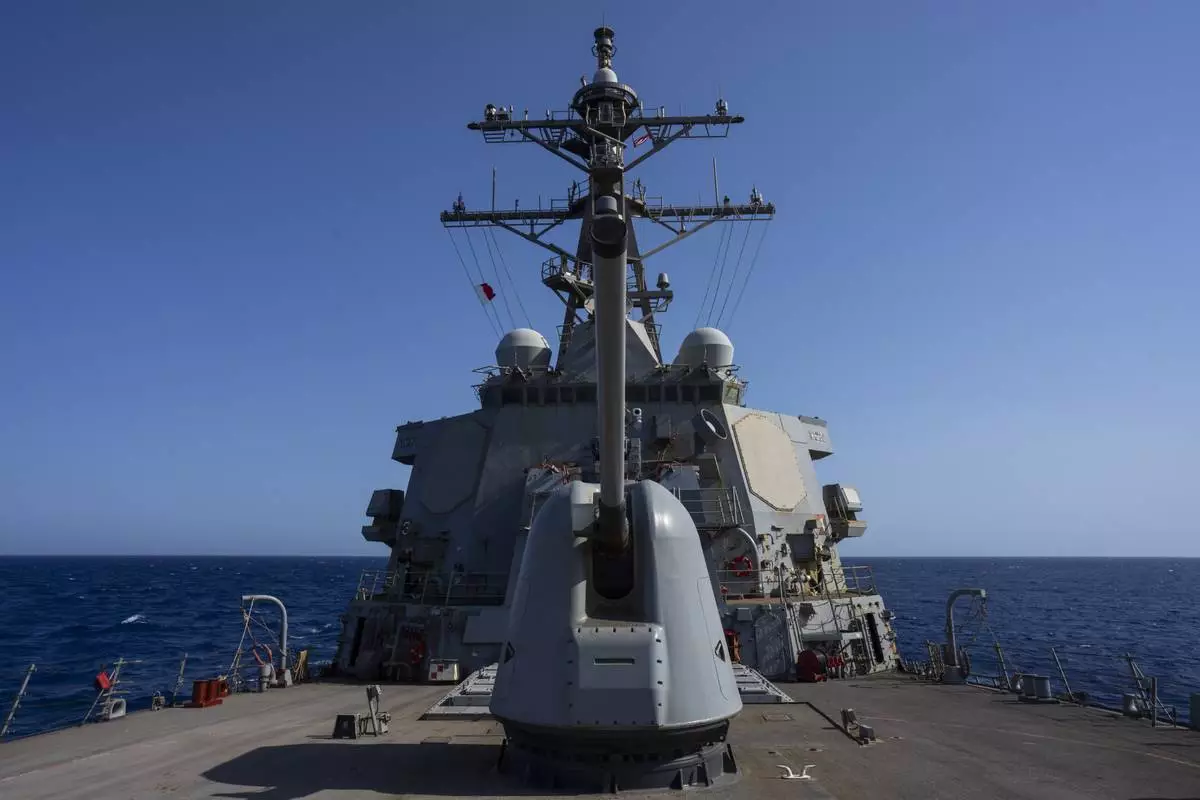
FILE - The Arleigh Burke-class guided missile destroyer USS Laboon sails in the Red Sea, June 12, 2024. (AP Photo/Bernat Armangue, File)
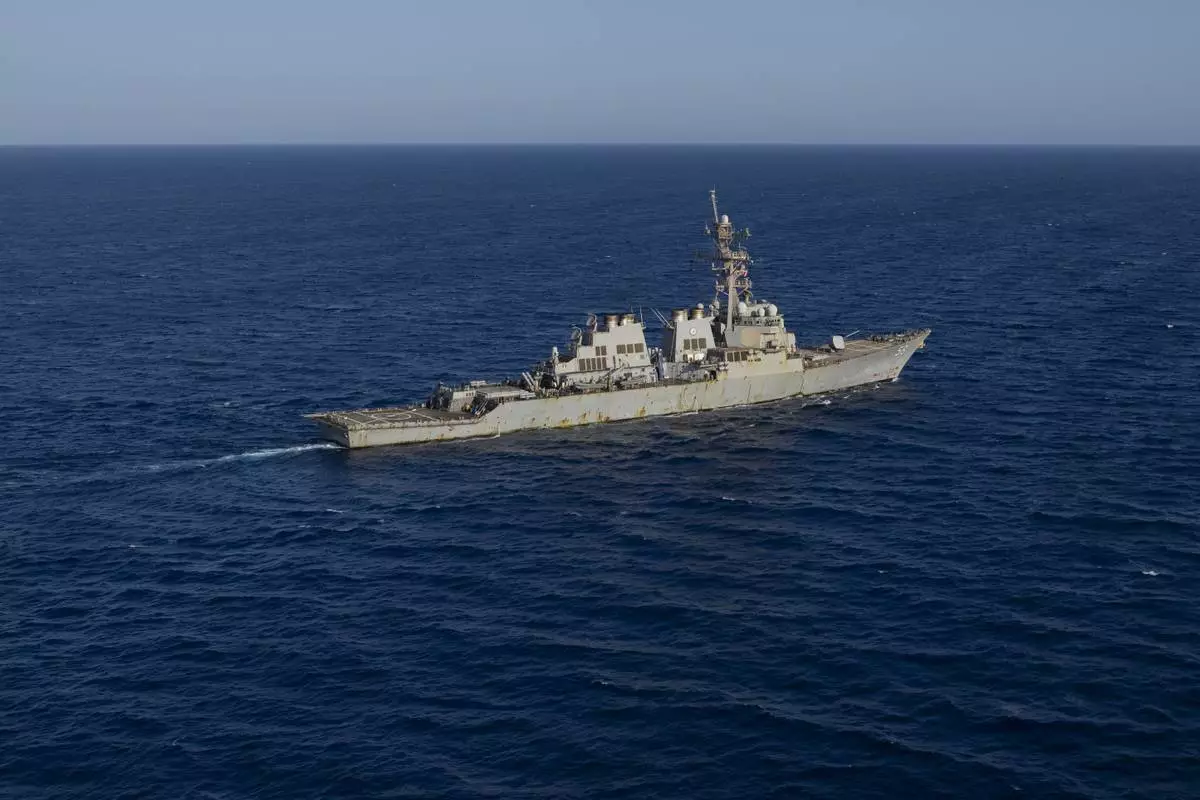
FILE - The Arleigh Burke-class guided missile destroyer USS Laboon sails in the Red Sea, June 12, 2024. (AP Photo/Bernat Armangue, File)
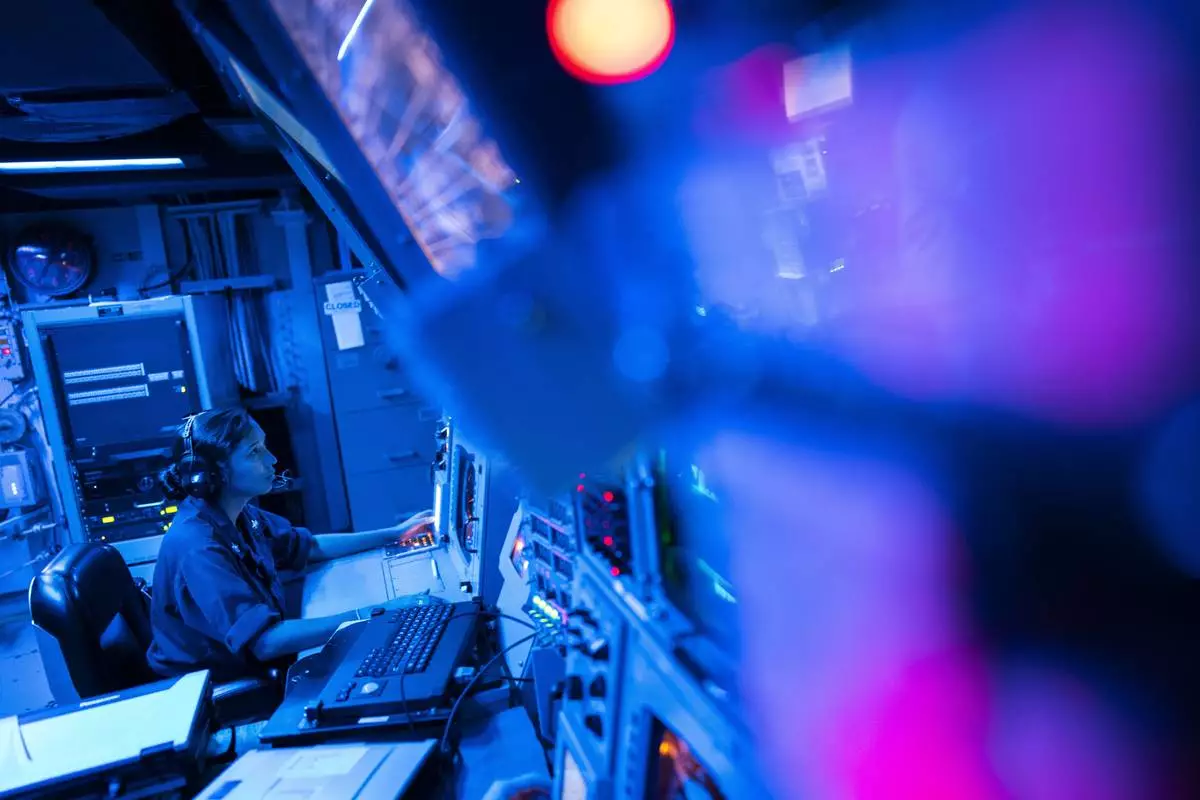
FILE -Crew members work in the combat information center of the Arleigh Burke-class guided missile destroyer USS Laboon during a deployment in the Red Sea, June 12, 2024. (AP Photo/Bernat Armangue, File)
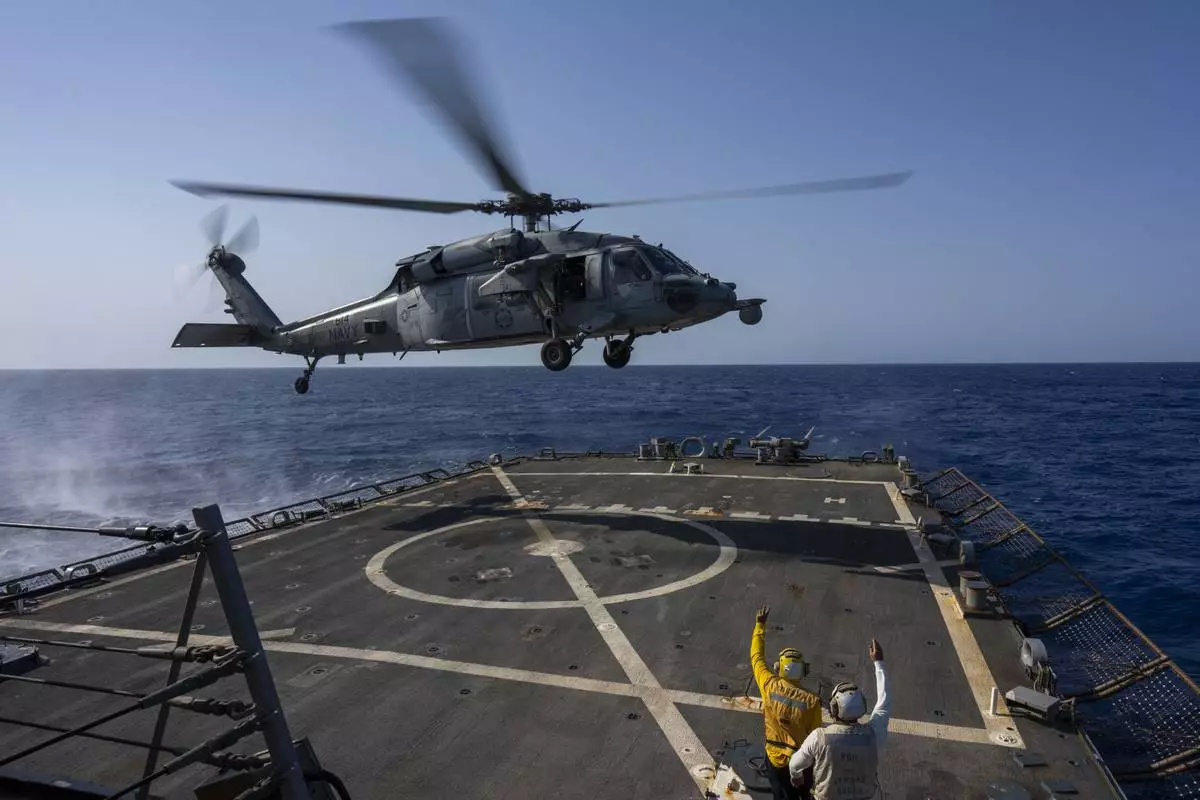
FILE - An HSC-7 helicopter lands on the Arleigh Burke-class guided missile destroyer USS Laboon in the Red Sea, June 12, 2024. (AP Photo/Bernat Armangue, File)










